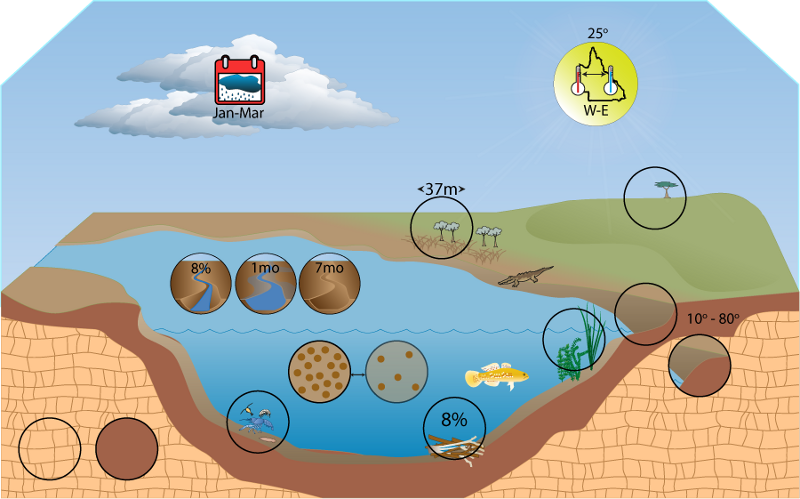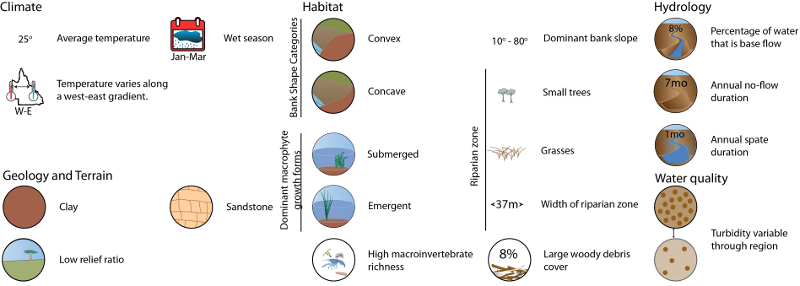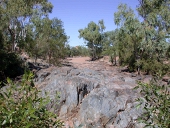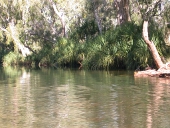|
|
Western Cape and Gulf Freshwater Biogeographic ProvinceWestern Cape and Gulf Freshwater Biogeographic Province – Geology and topography  Click on elements of the model or select from the tabs below Geology
The north and east sections of the FBP are dominated by sandstone; the south is dominated by deep heavy grey and brown cracking clays. The Australian Natural Resources Atlas[1] has more detailed geological descriptions about the various vegetation bioregions composing the WCG FBP:
Terrain
The Western Cape and Gulf has, on average, a low relief ratio, with a mean for the FBP of 0.013. High relief ratio areas are spread throughout the east of the FBP. Stream segment slope values are also low, with higher values corresponding to areas with high relief ratio values. The FBP is dominated by the erosional and valley bottom flatness index classes, both of which dominate different regions of the FBP. A small proportion of the FBP contains ridge top flat areas, which occupy the borders between erosional and valley bottom flat areas.
FBP Terrain Map State Terrain Map References
Last updated: 22 March 2013 This page should be cited as: Department of Environment, Science and Innovation, Queensland (2013) Western Cape and Gulf Freshwater Biogeographic Province – Geology and topography, WetlandInfo website, accessed 18 March 2024. Available at: https://wetlandinfo.des.qld.gov.au/wetlands/ecology/aquatic-ecosystems-natural/riverine/freshwater-biogeo/western-cape-and-gulf/geology-topography.html |

 — Department of Environment, Science and Innovation
— Department of Environment, Science and Innovation



